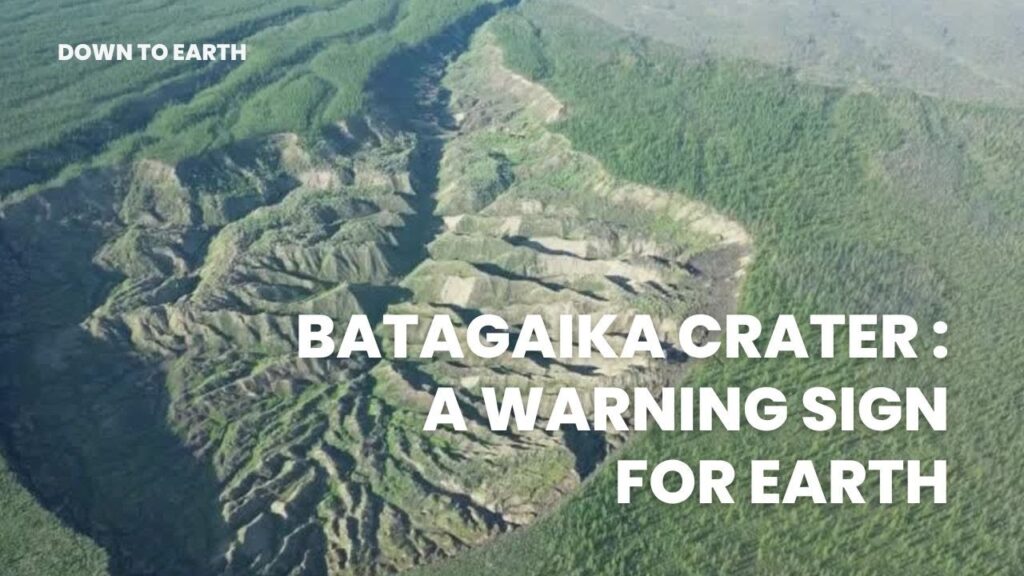The Batagaika Crater: Exploring the Fascinating Siberian Megaslump
Nestled in the isolated Eastern Siberian landscape, the Batagaika Crater is an awe-inspiring spectacle of nature. Often referred to as a ‘megaslump’, this incredible formation is a massive, elongated depression in the ground, measuring 1.2 kilometres long, up to 250 metres deep and around 100 metres wide. It is the result of an ongoing process of permafrost erosion that has been taking place over the past few decades, and its size and shape continue to evolve as time passes.
The Batagaika Crater is a fascinating natural phenomenon that is drawing the attention of scientists and tourists alike. Here, we take an in-depth look at this Siberian megaslump, exploring its origins, the effects of its ongoing evolution, and the reasons why it has become a popular destination for tourists.
The Origins of the Batagaika Crater
The Batagaika Crater is located in the Yakutia region of Russia, a vast area of remote, sparsely-populated tundra known as the Sakha Republic. This remote region of Eastern Siberia is the coldest inhabited place on earth, and temperatures here can drop as low as -68 degrees Celsius.
The formation of the crater began in the 1960s, when local authorities began to clear the forest in the area in order to make way for reindeer herding. This deforestation exposed the permafrost to the elements, causing it to erode and create an elongated depression in the ground. The phenomenon was initially referred to as a ‘megaslump’, as it was much deeper than the smaller ‘thermokarst’ depressions typically associated with permafrost erosion.
The Effects of Permafrost Erosion
Permafrost is soil that remains frozen all year round, and it covers around 24% of the earth’s land surface. In the Yakutia region, it is estimated that around 80% of the land is covered with permafrost. This frozen soil is an important part of the local ecosystem, and it provides crucial habitats for many species of plants and animals.
As the permafrost in the Batagaika Crater has eroded, it has exposed the ancient soils and vegetation that lie beneath. This has revealed a range of plants and animals that date back to the Pleistocene era, as well as a range of archaeological artefacts that have been preserved for thousands of years.
The erosion of the permafrost has also had a significant impact on the local landscape. As the crater has grown, it has caused the surrounding terrain to collapse, resulting in the formation of a large lake, as well as deep ravines and landslides. This has created an ever-changing landscape, making it a fascinating place to explore.
Exploring the Batagaika Crater
The Batagaika Crater is an increasingly popular destination for tourists, who are drawn by the opportunity to explore this remote region of Russia and witness the effects of permafrost erosion.
The crater can be reached by car from Yakutsk, the capital of the Sakha Republic. The journey takes around 4 hours, and the most popular way to access the crater is by helicopter, as it is the most direct route.
Once at the crater, visitors can enjoy a range of activities, including hiking, mountain biking, fishing, and wildlife spotting. The surrounding area is also home to a number of indigenous communities, providing a unique opportunity to learn about their traditional lifestyles and cultures.
Tourists can witness the dynamic changes in the landscape caused by the ongoing permafrost erosion, as well as explore the diverse flora and fauna exposed by this process. The ancient soils and vegetation uncovered in the crater offer a glimpse into the region’s ecological history, showcasing remnants from the Pleistocene era.
Despite its remote location and challenging climate, the Batagaika Crater has become a captivating destination for those seeking adventure and a deeper understanding of the Earth’s natural processes. As scientists continue to study this megaslump, and tourists explore its unique features, the Batagaika Crater stands as a testament to the ever-changing and dynamic nature of our planet’s landscapes.

